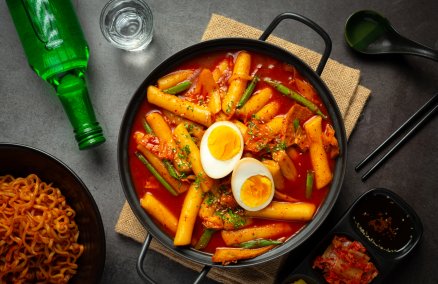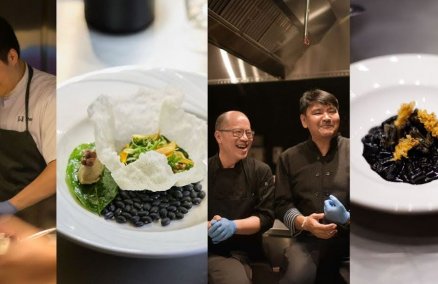Beyond Beijing
Been there, done that when it comes to the Chinese capital? Then give these nearby alternative destinations a whirl.
Datong
This city of 4 million in Shanxi province is perhaps best known for coal production, but the whole of the old city, a maze of hutongs (alleys) and small temples, is undergoing massive renovations, and it’s fascinating to see the already-reconstructed sites—such as the beautiful city walls.
See the Yungang Grottoes, an impressive series of hundreds of caves with carvings of Buddhas and other tableaus, is a half-hour drive from the city center. The first carving dates back to 465 BC, and over the next 100 years (as you progress down the walkway that runs parallel wiith the caves) the stonework gets more intricate and more colorful. There’s also the Hanging Monastery, which is built into a sheer cliff.
Play with coal-mining magnates. Man purses in hand—and their arm candy in toe—they are the main customers at 88 Bar, a fabulously garish nightclub. Music videos play on enormous screens lining the walls, as the DJ spins dance tunes from behind a catwalk and a singer belts out Mandopop covers during the occasional interludes. Plus, it’s got the plushest squat toilets you’ll ever see.
Drink tea at Feng Lin Ge (Xiasipo Street, (+86) 352-2059-699). The teahouse fans out around a courtyard and is decked out with old-school touches such as fountains, fish ponds, an outdoor terrace and lots of architectural detail; it’s a lovely place to spend an afternoon. Make sure to try the shaomai—delicious, colorful dumplings stuffed with meat and other ingredients that are a local specialty. And at Yonghe Restaurant,zz near the ancient city wall (intersection of Xiao Nan Jie and Shanhuasi Roads, (+86) 352-2059-199), you can order a feast of tender lamb, noodles, veggies and shredded potatoes for a reasonable price.
Buy leather accessories. Outside of the overpriced souvenir vendors at the Yungang Grottoes, there’s not much in the way of shopping. But at the tiny airport, there’s a store selling fur-lined leather caps, slippers and other attire befitting a stylish cowboy. That’s how you know you’re really in the Chinese hinterlands.
Clamber up the steps of the very-well-restored 14th-century city walls. It’s the perfect vantage point for looking towards the city’s old-fashioned interior while at the same time absorbing the modernity of the new city.
Stay at the only “top-tier” hotel within the old city, the Garden Hotel (59 Yongtai St., tiny.cc/gardenhotel), which you can book on Ctrip (english.ctrip.com) for about RMB250 (B1,230) per night. Avoid getting a room in the old wing, and you’ll be rewarded with spacious, clean accommodation, an up-to-date bathroom with a tub and waterfall shower and even bathrobes in the closet. Yes, for that price.
Chengdu
It’s always a good practice to size up where luxury hotels are setting their sights—and to head to those up-and-coming cities first, before the crowds flood in. The Mandarin Oriental, Swissôtel and Banyan Tree, to name just a few, are working on projects in Chengdu that are set to open in the next few years.
Head to the top of Mount Qingcheng, an hour outside the city. (Don’t worry, you take a cable car most of the way.) It’s a verdant journey to the top, where there’s a famous Taoist temple. The mountain receives more than 200 days of rain a year, so it’s blissfully cool and appropriately misty and spiritual. In the city center, two pedestrian-only reconstructed thoroughfares—the Wide and Narrow Alleys (aka Kuanzhai Xiangzi) and Jinli Street—are, despite their kitschiness, worth a stroll for their teahouses, cafés, shops, and lively nighttime atmosphere.
Drink at Lan Kwai Fong of Chengdu (www.lkfchengdu.com). It’s kind of tacky and forced but, hey, there’s booze and a Starbucks.
Try the spicy hotpot, loaded down with chili pepper oil. You can dunk everything from the mundane (tofu, beef) to the exotic (snake, rabbit) into the bubbling broth. Your eyes may water, and your clothes may stink, but it’ll be worth it. Try Lao Ma Tou on Yulin Central Street (www.lmthg.com).
See “The Legend Show,” a touristy-yet-hilarious rendition of the old-school art of Chinese opera, every night (Jinjiang Theater, 54 Huaxinzheng St., (+86) 28-8666-6891).
Hug a panda. Seriously. The Chengdu Panda Base (www.panda.org.cn) is probably the most-visited site in the city—and rightly so. These black-and-white bundles of love are seriously adorable. In spacious enclosures, they clamber up trees, munch on bamboo and tussle with each other. The base’s expertise is breeding the little munchkins, with 83 pandas in captivity. Make sure to call ahead and reserve one of the limited daily spots to be able to don a blue hospital gown and hold one of the babies for a few minutes. It’ll run you about RMB1,300 (B6,390), but those photos are priceless.
Stay at the nicest hotel in the city, the Shangri-La Chengdu (6 Binjiang Dong Rd., (+86) 28-8888-9999), located on the Jin River (many of the rooms overlook it). It features large-scale works by Sichuan artists in the grand lobby and adjacent lounge. Shang Palace serves top-quality Chinese food, Mooney’s Bar has a rockin’ western cover band and the Chi Spa incorporates local herbs into its relaxing treatments.
Shaoxing
Well-known for its rice wine—and being the hometown of Lu Xun, one of the most famous Chinese writers of the 20th century—Shaoxing has a lot to offer. History, culture and a decent arts scene is just some of what you’ll find.
Visit the home of Lu Xun. A writer and essayist who exposed the political and social problems of his time through stories about ordinary people, Lu’s darkly humorous stories earned him a powerful legacy and multitudes of admirers. Definitely pay his former residence, Lu Xun Native Place (Lu Xun Middle Street, www.luxunhome.com) a visit—the area contains a museum, Lu’s ancestral residence and gardens. His sprawling home has been impeccably preserved, with informative plaques explaining the history behind each room and garden. As in Suzhou, boat rides along canals parallel to the streets are also available. Take a trip out to the East Lake, though, if you’re after some prettier scenery.
Eat local food. A mite spicier and fuller-flavored than other cuisines of the region, Shaoxing dishes make ample use of its famous rice wine. With less than 24 hours in Shaoxing, we tried as many dishes as we could at The Xianheng (Shaoxing Xianheng Hotel, 179 Lu Xun Middle Rd., (+86) 575-8522-7267, www.xianhenghotel.com)—we particularly liked the duck with bean sauce and steamed, fermented tofu with vegetables, both local staples. Just as ubiquitous as Shaoxing rice wine is Shaoxing’s version of smelly tofu—brace yourselves! It’s served with both a thick and pungent chili sauce and a sweet sauce. You’ll find the stinky snack anywhere from street carts to fancy restaurants, so there’s no excuse for not giving it a try.
Buy a bottle of Shaoxing rice wine. With our sweet tooth, we preferred the sweeter, more syrupy version (just as potent as the other varieties). Though some restaurants may have counters where you can buy bottles, avoid these overpriced wares in favor of shops that specialize in liquor and gift bottles. We found a shop just behind the Xianheng that sold tiny 300ml bottles for just RMB10 (B50), or larger, classy-looking bottles in gift boxes for just under RMB100 (B500). (Oh, and don’t forget to bargain where you can.)
Snack on aniseed-flavored beans and wash them down with rice wine drunk the traditional way—in ceramic rice bowls. (We suggest pacing yourself, as we had about a shot glass worth of the potent stuff with a large lunch and still ended up tipsy by the end of the meal.) The beans were made popular by Lu Xun’s “The Story of Kong Yiji,” in which the protagonist enjoyed the snack. You’ll be able to order the savories at the front of the Xianheng while seated at old-school wooden benches and tables. You’ll also get to see the wine stored in large clay urns. Plenty of little eateries along Lu Xun Middle Road serve the snack, too.
Hole up at the Old Xianheng Hotel (179 Lu Xun Middle Rd., Yuecheng District, (+86) 575-8511-6666), which is located in the middle of town and is decorated with lots of traditional elements. Its rooms go for just over RMB1,000 (B5,000) to RMB2,000 (B10,000) per night.
Getting There
Datong. From Bangkok, Air China (www.airchina.com) flies via Beijing, China Souther Airlines (www.csair.com) flies via Guangzhou, and Chian Eastern Airlines (www.flychinaeastern.com) flies via Shanghai. Fares are from around B18,000.
Chengdu. THAI Airways (www.thaiairways.com) flies direct from Bangkok from B16,700.
Shaoxing. Since Shaoxing doesn’t have its own airport, you’ll have to fly to Hangzhou, which is the nearest airport. Most Chinese airlines—China Eastern, China Southern, Hong Kong Airlines, Air Macau and Cathay Pacific—have flights there, with a stop at different Chinese cities, from B14,600. Once you reach Hangzhou, there are frequent shuttle buses (RMB30 [B150]) that take you from the airport into downtown Shaoxing in just 45 minutes.
Currency
RMB1 = B5
| Address: | Beyond Beijing, Beijing, China |
| Report a correction | |



















